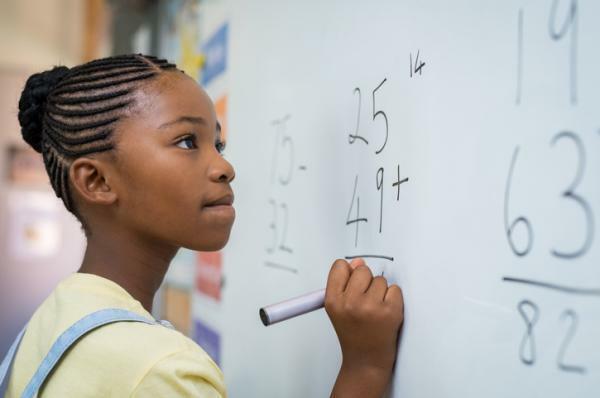By Dr Edward R. Hernandez Gonzalez. Updated: August 31, 2022
We define multiple intelligences as eight cognitive abilities that we all possess and all at some level. These capacities are relatively autonomous and were defined from the study of the mental abilities identified through a study of particular cases.
The different types of intelligence can developthrough practice and reinforcementor, so it is not completely innate. Human potential plays a very important role in the promotion of multiple intelligences described by Howard Gardner.
Howard Gardner Biography
Howard Gardner was born in 1943. He comes from a Jewish family, refugees from Nazi Germany. A fact that marked the biography of Howard Gardner was his interest in psychology, influenced by the thoughts of Erik Erikcson and Jerome Bruner and, thanks to this interest, he decided to train at Harvard University in psychology and his neuropsychology. So he is an American psychologist who contributes in education and psychology.
Other relevant facts of Howard Gardner's biography are his
Howard Gardner is best known for his research on the mind and intelligence of the human being. In this sense, after having investigated for a long time the development of the cognitive capacity of the human being, in 1993, Gardner presented his best-known theory: the theory of intelligences multiple.
Thanks to his ideals and thoughts, Howard Gardner managed to question a large number of traditional beliefs. marked as, for example, the belief in the existence of a single dimension of intelligence, the importance of the intelligence quotient (IQ) as the most reliable tool to assess mental ability and classify students based on possible successes/failures of their schooling, regardless of how each one is, how much and how they should learn, etc.

Dr. Howard Gardner, director of Project Zero and professor of psychology and educational sciences at Harvard University, proposed his theory of Multiple Intelligences in 1993. In it, I come to the conclusion that intelligence is not something innate and fixed who masters all the skills and problem-solving abilities of the human being.
Furthermore, he has established that intelligence is located in different areas of the brain, interconnected with each other and that can also work individually, having the property to develop widely if they find an environment that offers the necessary conditions for it.
Howard Gardner and his book on multiple intelligences
The history of multiple intelligences goes back to Howard Gardner's book "Structures of the mind", which introduces the concept of multiple intelligences by posing the following problem[1]:
A little girl spends an hour with an examiner, who asks her questions to test your intelligence 'Who discovered America?' 'What does exaggerated mean?' or about your ability to remember numbers' complete the following sequence: 1, 1, 2, 3, 5, 8' (...) An hour later, the examiner rates the responses and obtains a figure: the quotient Intellectual or IQ
This number can be terribly decisive for self-esteem and self-concept of the girl, the importance we give to the intellectual quotient is not entirely adequate. So what would happen if we considered a broader and more diverse view of intelligence?
Let us consider, then, those people who perhaps do not know how to recite a literature syllabus by heart but who are able to get out of a compromised situation with their words and thought agile. Or those children who have difficulties solving an equation but have no problem passing high-level physical tests.
In this sense, thanks to Gardner a broader vision of the human mind arose, coming to value more and more other aspects related to the executive functions and cognitive, such as imagination, creativity, emotions, interpersonal relationships, etc.
In the 1983 edition of the book "Multiple Intelligences", Gardner affirms the existence of seven types of intelligence, however, today we can list 12 types of intelligence according to Howard Gardner. Let's look at each of these multiple intelligences with examples.
1. Linguistic-verbal intelligence
Verbal intelligence is that which can be observed in people with ease in expressing, understanding and developing complex verbal messages. Thanks to linguistic intelligence we can learn new languages more easily, brain areas such as the Broca and Wernicke's area (responsible for the production and comprehension of language) tend to be more developed in these cases.
It is the ability to use words effectively, manipulating the structure or syntax of language, phonetics, semantics, and its practical dimensions. We can find this kind of intelligence in children who love write stories, read, play with rhymes, tongue twisters and those who easily learn other languages.
2. Physical-kinesthetic intelligence
It is the ability to use one's own body to express ideas and feelings, and their particularities of coordination, balance, dexterity, strength, flexibility and speed, as well as proprioceptive and tactile.
It is appreciated in children who excel in sports, dance, body language and/or construction work using various concrete materials. Also in those who are skilled in playing instruments.
3. Logical-mathematical intelligence
It is the ability to handle numbers, relationships, and logical patterns effectively, as well as other such functions and abstractions. Among the types of multiple intelligence, the logical-mathematical would be related to a great extent with what was considered until now as the only intelligence, the Intellectual Quotient.
It is about the rational and mathematical functioning that usually manifests itself in people dedicated to scientific and academic field, for example, where the ratio predominates in the modes of action general.
Children who have developed it easily analyze approaches and problems. They approach number calculations, statistics, and budgets with enthusiasm.
4. spatial intelligence
It is the ability to accurately appreciate the visual and spatial image, to represent ideas graphically, and to sensitize color, line, shape, figure, space and their interrelationships. Spatial type multiple intelligence is one that allows one to easily deal with different environments and spaces, either physically real or imagined.
Some examples of people with a good development of spatial intelligence are architects, designers, tour guides, hikers, among others. These examples of trades with high levels of spatial intelligence that allows them to imagine and create new spaces and/or orient yourself correctly in the different places where they are.
It is in the children who study better with graphs, diagrams, charts. They like to make concept and mind maps. They understand very well Blue prints ans drafts.
5. musical intelligence
It is the ability to perceive, distinguish, transform and express the rhythm, timbre and tone of musical sounds. The next type of multiple intelligence is musical intelligence, which, as its name suggests, involves the capacity and ability to skillfully develop in the musical field.
From composers to musicians, conductors, singers, etc. They are examples of people who have high levels of development of musical intelligence, which allows them to successfully carry out their professional careers.
Children who show it are attracted to the sounds of nature and all kinds of melodies. They enjoy following the beat with their foot, tapping or shaking an object rhythmically.
6. interpersonal intelligence
It is the possibility of distinguishing and perceiving the emotional states and interpersonal signs of others, and responding effectively to these actions in a practical way. People with high levels of interpersonal intelligence are people with the ability to establish healthy and good social relationships.
These are people with high levels of empathy, assertiveness and cordiality, fundamental aspects to establish positive and constructive relationships in life.
Children who enjoy working in a group have it, who are convincing in their negotiations with peers and adults, who understand their partner.
7. intrapersonal intelligence
It is the ability to self-introspect, and to act accordingly on the basis of this knowledge, to have an accurate self-image, and capacity for self-discipline, understanding and self-love.
It is evidenced by children who are reflective, of sound reasoning and who tend to be advisors to their parents. Howard Gardner uses an autistic child as an example to illustrate this type of damaged intelligence "the child may be unable to refer to himself. At the same time, he often displays extraordinary abilities in the area of music, space, or mechanics."
8. naturalistic intelligence
The latest addition to the list of multiple intelligences is naturalistic intelligence (added in the 1995 edition).[2]. This is defined as the ability to distinguish, classify and use elements of the environment, objects, animals or plants. Both urban and suburban or rural environment. It includes the skills of observation, experimentation, reflection and questioning of our environment.
It occurs in children who love animals, plants; who recognize and like to investigate features of the natural and man-made world. If you want to know more, check our post Naturalistic intelligence: what it is, characteristics, examples and activities.
9. bodily kinesthetic
This is one of Howard Gardner's types of multiple intelligence that refers to the ability to make good use of the body, in relation to its personal use (ability to use the body effectively) and regarding its use as a means of personal expression (ability to use the body correctly in non-verbal communication).
Athletes and dancers, for example, have a high level of body control that allows them to develop their professions correctly. This ability also tends to manifest itself in people with high levels of emotional, linguistic and interpersonal intelligence, since the communication requires coherence between verbal and non-verbal communication, and therefore, bodily, for it to be adequate and effective.
10. collaborative
Collaborative intelligence constitutes the ability to establish bonds of union and collaborative participation with other people. These are people with a special ability to work in a team. These types of people manage well, for example, as managers of work groups since they can correctly manage the human relations that occur within the group.
11. creative
Other types of multiple intelligence on this list of 12 is creative, one that allows people to "create" as a special ability. Artistic fields are developed thanks to people with high levels of creative intelligence.
In the same way, this type of intelligence is manifested in enterprising people who imagine and can develop innovative projects. To learn more about this classification, read Creative intelligence: characteristics, examples and how to develop it.
12. existential
The last of the 12 types of multiple intelligence is existential. Existence occurs in those people with metaphysical and existential interests, beyond mundane interests. Some examples of people who have high levels of existential intelligence are philosophers and spiritual people.
This development of existential intelligence leads these people to need to investigate existential issues regarding the meaning of life, our mission in the world, etc.

With the help of Howard Gardner, educator and writer Thomas Armstrong decided to apply the theory of multiple intelligences in the educational field, thus writing his famous book "Multiple Intelligences in the Classroom[3]" in 1999. In this book, Armstrong proposes to study and describe the intelligence of students with the aim of being able to develop multiple intelligences in the classroom.
The same educator admits that developing a profile of multiple intelligences is not something easy, however, he proposes a series of affirmations for each type of intelligence so that we can classify infants correctly according to whether or not they feel identified with said affirmations.
Multiple intelligences and teaching strategies
When promoting the personal development and human potential of students, it is important to apply a teaching strategy to each student according to the type of intelligence we want to work on. For example, if we want to develop the spatial intelligence, we can perform the following dynamics:
- Display.
- Color signs.
- graphic metaphors.
- Idea sketches.
- Graphic symbols.
On the other hand, if what we want is to promote the Interpersonal intelligence, the teaching strategies that should be applied are the following:
- Share with colleagues.
- Make cooperative groups.
- Table games.
- Role plays among peers.
Currently, there is talk of comprehensive development of the child, which includes all aspects of physical, sexual, cognitive, social, moral, language, emotional development, etc. This is precisely what the theory of development of multiple intelligences.
Life experiences and development of multiple intelligences
There are two key types of extreme experiences in the development of multiple intelligences that are important to keep in mind. Let's see which ones:
- crystallizing experiences: they are milestones in personal history, key to the development of talent and skills in people. Often these events occur in early childhood. These experiences are what ignite the spark of an intelligence and start its development towards maturity.
- paralyzing experiences: they exist as a counterpart to the previous ones, they refer to those experiences that block the development of intelligence, are full of negative emotions, capable of slowing down the normal development of intelligences. Feelings of fear, shame, guilt, hatred, prevent grow intellectually.

The Theory of multiple intelligences Howard Gardner's has impacted those who are involved in one way or another in the teaching-learning process. In many cities in the United States, in Puerto Rico, the Philippines, Singapore, as well as in Europe, have sprung up schools where activities are carried out aimed at developing the different intelligences that the individual has.
How much intellectual possibility, and how much development capacity we own. However, when we analyze the teaching programs that are taught in many institutions and that they force the students, the children to follow, we observe that they limit themselves to concentrating on the predominance of linguistic and mathematical intelligence giving minimal importance to the other possibilities of knowledge.
Reason why many students who do not stand out in the domain of traditional academic intelligences, are not recognized and are thus dilutes their contribution to the cultural and social sphere, and some come to think that they are failures, when in reality their contributions are being suppressed. talents.
From what has been described above, we know then that there is no general intelligence grow or stagnate, but a multiple list of aspects of intelligence, some much more sensitive than others to the modification of appropriate stimuli.
Multiple intelligence classrooms
already talks about "Schools of Multiple Intelligences", where students learn and are strengthened intellectually through a curriculum that instead of emphasize teaching through the intelligences, schools emphasize teaching "for" the intelligence. Students are motivated so that they can achieve the goals they have set themselves to achieve.
Teachers develop didactic strategies that take into account the different possibilities of acquiring knowledge that the child has. If he does not understand through the intelligence that is chosen to inform him, they consider that there are at least seven different ways to try.
Parents have active participation in planning activities that help enrich the curriculum and attend meetings where the curriculum is discussed progress of their children, also at home they stimulate, understand and encourage their children in the development of their capabilities.
Thus, from this Theory of Multiple Intelligences, a break with old paradigms of teaching is opened.



